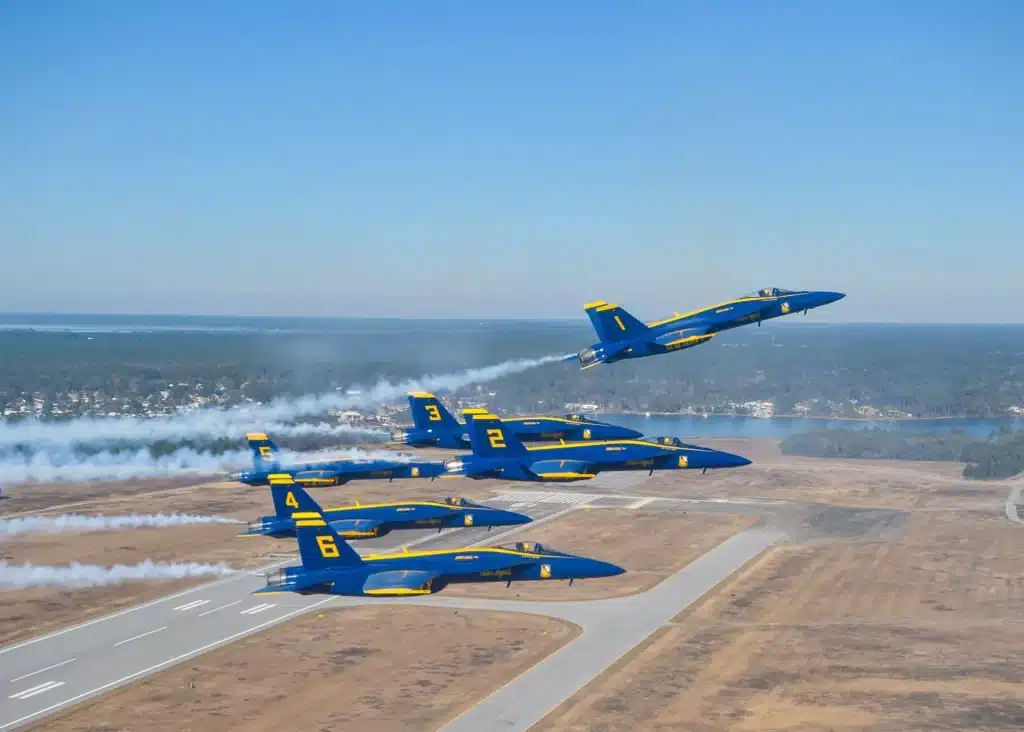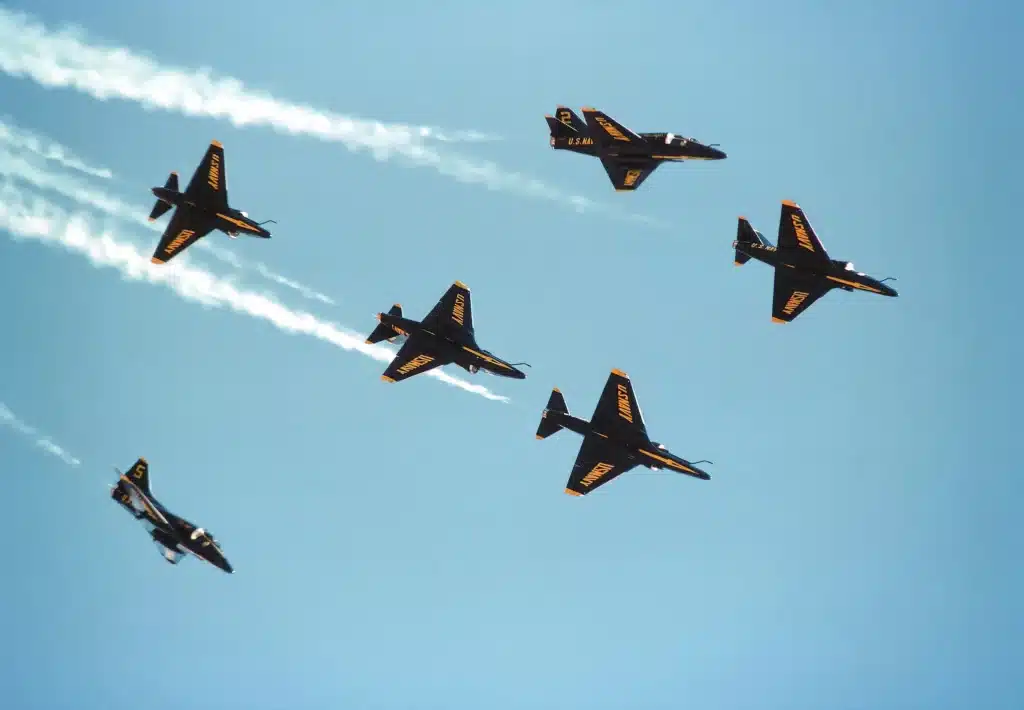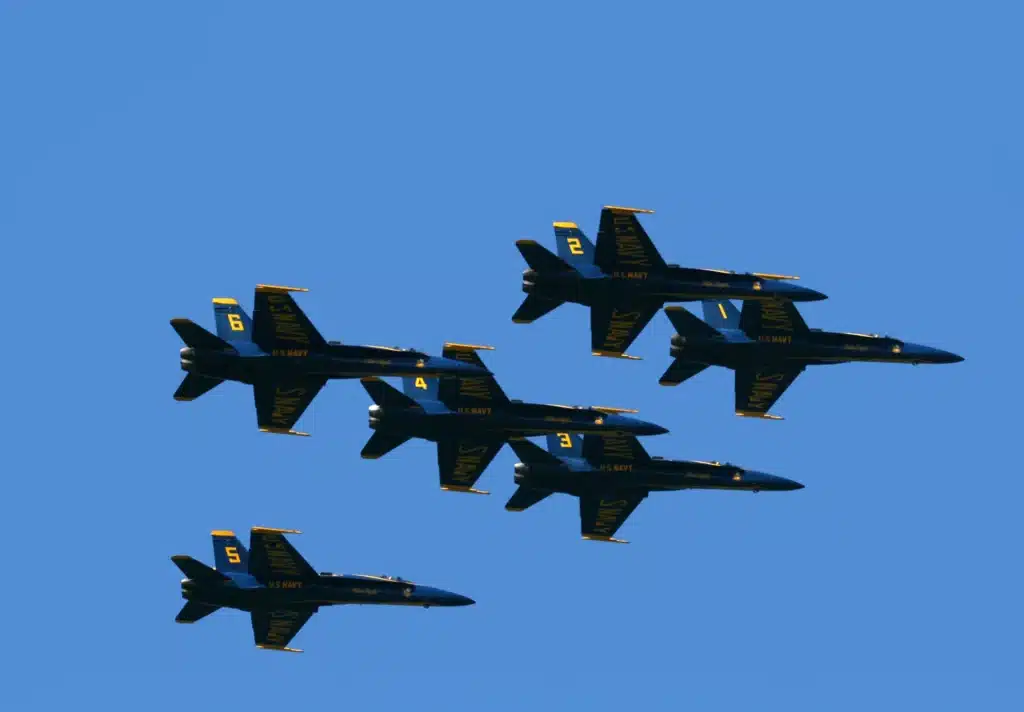Blue Angels perform death-defying maneuver at nearly speed of sound over residential area
- The Blue Angels are the demonstration squadron of the U.S. Navy
- They use two types of aircraft, the Super Hornet fighter jet and the C-130 transport plane
- The Super Hornet can fly at Mach 1.6
Published on May 23, 2024 at 3:05 PM (UTC+4)
by Alessandro Renesis
Last updated on May 24, 2024 at 6:32 PM (UTC+4)
Edited by
Tom Wood
The mythological U.S. Navy Blue Angels were seen performing some breathtaking maneuvers over the Severn River in Maryland this week.
Flying very close to the speed of sound, the Blue Angels looked absolutely majestic.
READ MORE: Why there hasn’t been any commercial supersonic planes since Concorde
Blue Angels is the name that’s currently used for the flight demonstration squadron of the United States Navy.
They typically perform aerial displays at around 60 different shows every year.
Interestingly, they occasionally also perform in Canada as well as in the US.
The Blue Angels fly two types of aircraft, the Boeing F/A-18 Super Hornets, a twin-engine fighter jet, and the Lockheed Martin C-130J Super Hercules, which is a military transport aircraft.
For this show, which was part of U.S. Naval Academy’s Commissioning Week, the Blue Angels flew at about 700mph, which is close to the speed of sound, relatively close to the ground.
It’s quite a sight to behold.
But – surprisingly – not particularly unusual.
Not that long ago we saw a B-2 flying over a stadium as part of a different demonstration.
For this particular show, the Blue Angels obviously used the fighter aircraft, not the transport plane.

Launched in 1995 by McDonnell Douglas and then again under Boeing in 1997, the Super Hornet is a 60-foot (18m) jet that’s available with either one or two seats.
Each engine – it has two – is capable of generating up to 13,000 lbf of thrust, which goes up to 22,000 lbf with afterburner.
Translated, it can fly at 1,900+ km/h, and break the speed of sound flying at Mach 1.6.


As you could’ve easily predicted, all of that comes at a cost.
And it’s a hefty one at that.
According to the United States Naval Institute (USNI), the U.S. Navy recently purchased 17 Super Hornets for $1.1 billion.
That works out at over $60 million per unit, on average.
It’s expensive but, amazingly, nowhere near as expensive as the C-17, for example, which costs nearly four times as much.
DISCOVER SBX CARS: The global premium car auction platform powered by Supercar Blondie





